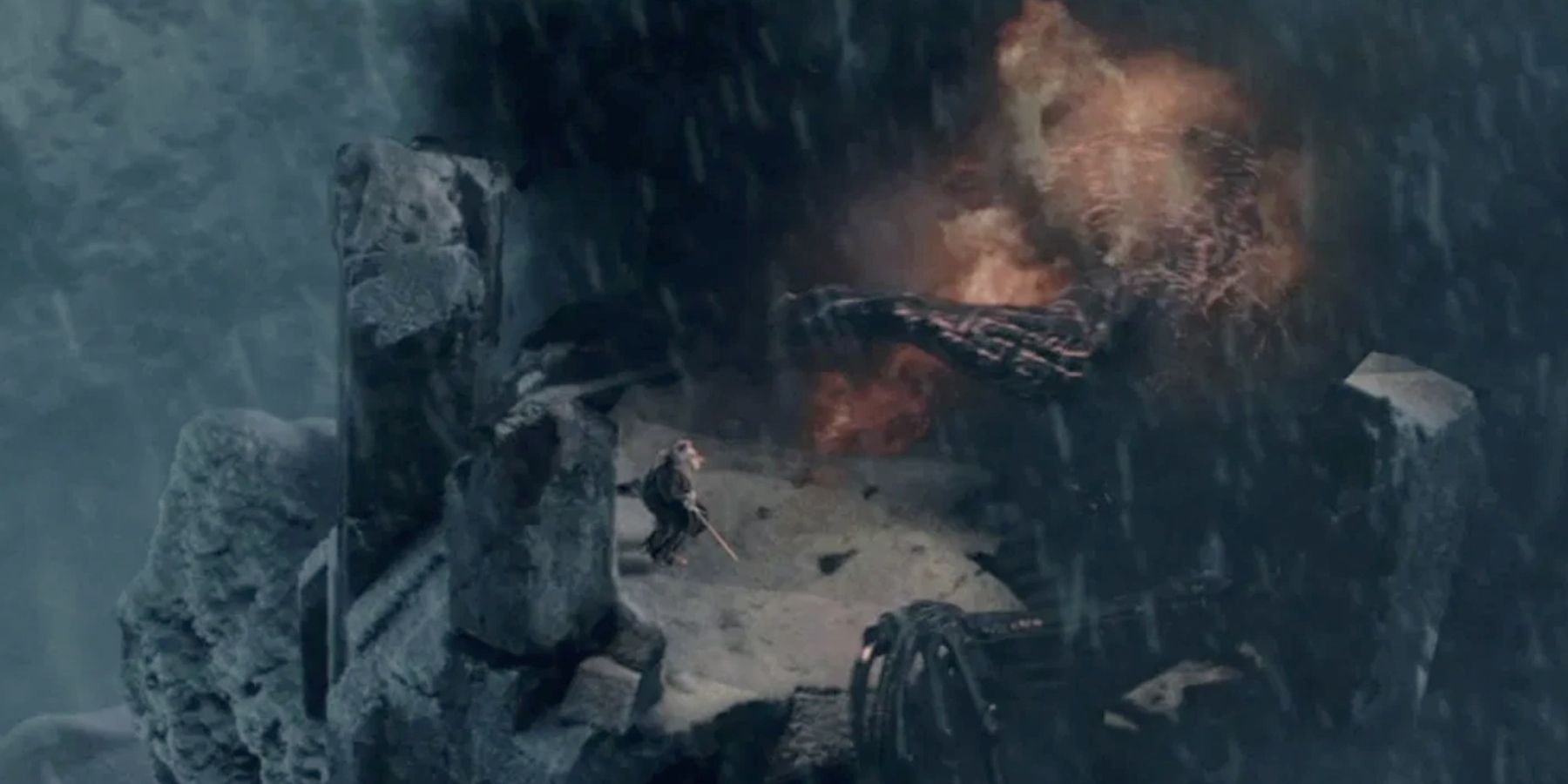Gandalf’s battle with the Balrog in the Mines of Moria is probably one of the most breath-taking, edge of your seat fights in the entire trilogy, both because of the impressive visual aspects of fire and smoke in Peter Jackson’s film adaptations, and because of the high stakes involved, of Gandalf giving his life to protect his friends, and give them a chance to escape safely out of the mines. His loss hits the fellowship hard, and they break not long after this, without his guidance, which goes to show exactly what a sacrifice he makes.
In the opening scenes of the Two Towers film, the audience can see Gandalf and the Balrog falling through the caverns below Moria, amidst the spectacular backdrop of New Zealand's incredible mountain ranges, in this case representing the 3 mountains above Moria, under which Khazad-dum lies. They seem to be endlessly in free-fall, battling in mid-air, until they plunge into a lake, and even that does not distinguish the Balrog’s mighty flame. But many fans have questioned how, if they were plummeting deeper into the heart of the mountains, did they end up on the top of one?
In the later Two Towers scene, when Aragorn, Gimli, and Legolas come across the white wizard in their pursuit to save Merry and Pippin from Fangorn Forest, he tells them, "From the lowest dungeon to the highest peak I fought him, the Balrog of Morgoth, until at last I threw down my enemy and smelt his ruin upon the mountainside.” Peter Jackson accompanies this speech with a visual representation of Gandalf and the Balrog fighting upon a tall summit, until Gandalf does indeed defeat the Balrog, and then proceeds to die on the mountainside himself after his body is utterly spent by the effort. But how did they get to the top of the mountain in the first place, when they had seemed so stuck in the darkness below it?
The answer to this can be found in the passage in Tolkien’s original book. Here Gandalf explains: “at last my enemy brought me back to the secret ways of Khazad-dum: too well he knew them all. Ever up now we went, until we came to the Endless Stair.” Gimli replies “Long has that been lost! Many have said that it was never made, save in legend, but others say that it was destroyed.” But Gandalf, having been there, now knows the truth behind the legend: “It was made, and it had not been destroyed. From the lowest dungeon to the highest peak it climbed, ascending in an unbroken spiral for many thousands of steps, until it issued at last in Durin’s Tower, carved in the living rock of Zirakzigil, the pinnacle of the Silvertine.”
The Silvertine is one of the three mountains that exist above Moria, and until now, many of the dwarves had believed that the tower Gandalf speaks of had been lost or destroyed long ago, or never actually built at all, simply a legend to make the kingdoms of Durin seem that much more mighty. This is the tower that can be seen in the background during Gandalf and the Balrog’s fight, proof that the Endless Stairs and the once-mighty watchtower of Durin were built several hundred years before. So after Gandalf and the Balrog fell into the water, Gandalf was more lost than ever, especially without the light of the Balrog’s fire to help him, so he had no choice but to cling onto the back of it as it fled through the tunnels and up the staircase, destroying it, and the entrance to the long-lost tower, as he went.
In many ways, it is a good thing that they did end up on such a high peak, out in the open, both because this is where Gandalf had the advantage, rather than in the darkness where he was blind and weakened, but also because it brought him closer and more visible to Eru, who was able to bring his spirit back in the form of Gandalf the White.
Eru would have been able to find and mend his broken body even in the depths of the mountains, but it was more symbolic in Tolkien’s writings to have Gandalf staring at the open sky, close to the heavens when he passed out of the world and then back into it again. He is rewarded for his valiant sacrifice, because he is the only one of the maiar who actually stayed faithful to the mission of the Istari, to protect Middle Earth and Guide its people at all costs, even if it meant giving his life in the process.






